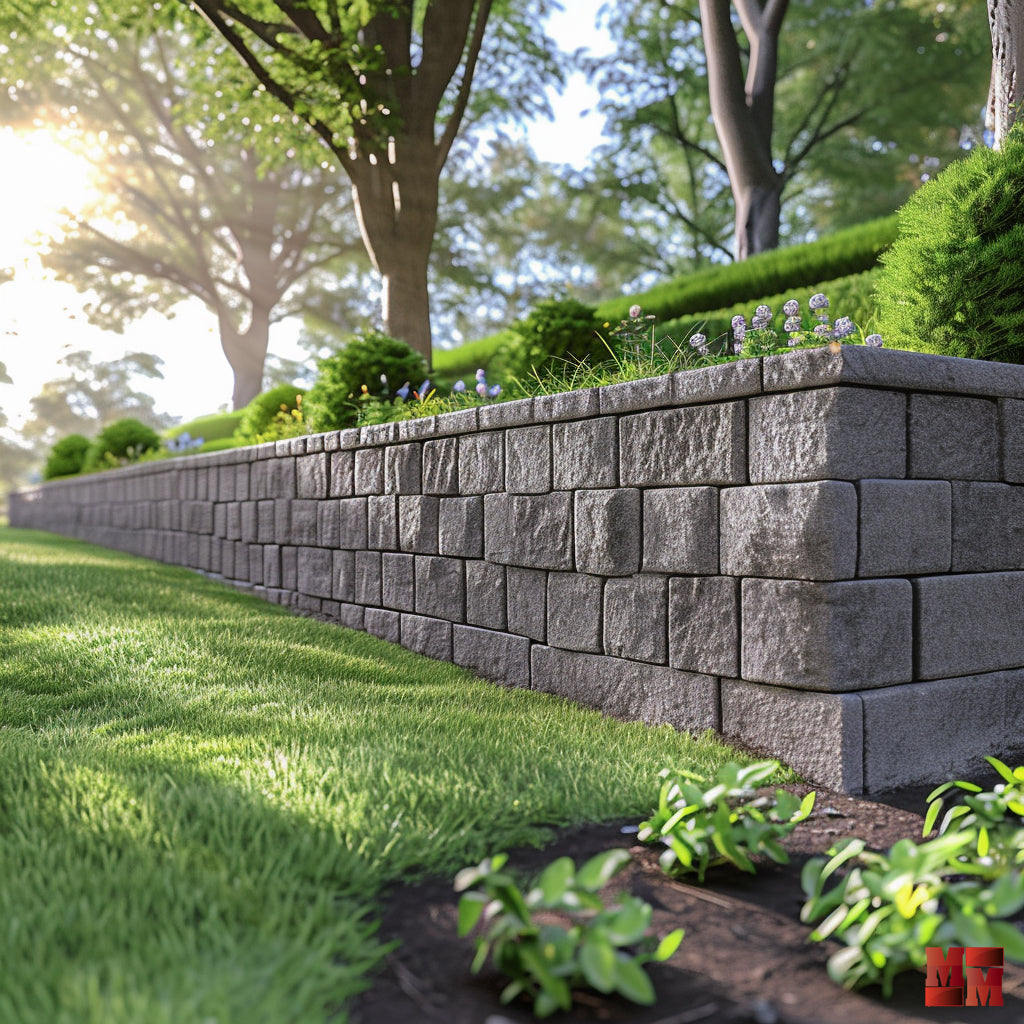How to Ensure Proper Drainage Behind a Masonry Retaining Wall?
Drainage behind a masonry retaining wall is often overlooked but plays a crucial role in the durability and stability of these structures. Retaining walls are designed to hold back earth and prevent landslides, but without effective drainage, they are susceptible to significant damage. In this article, we will delve into the importance of drainage behind a masonry retaining wall and provide you with a comprehensive guide on how to ensure effective drainage. Whether you reside in Montreal, Laval, Longueuil, the South Shore, or the North Shore, this information is essential to ensure the longevity of your retaining walls.
The Importance of Drainage Behind a Retaining Wall
1. Landslide Prevention
The primary purpose of a retaining wall is to retain earth and prevent landslides. However, when water accumulates behind the wall without a means to escape, it exerts increased pressure on the structure, raising the risk of landslides.
2. Avoiding Foundation Damage
Poor drainage can also lead to damage to foundations adjacent to your retaining wall. Water infiltrating the soil can weaken the stability of foundations and cause cracks.
3. Preserving Masonry Integrity
Stagnant water behind a retaining wall can also cause damage to the masonry itself. Freeze-thaw cycles can exacerbate these issues, resulting in cracks and settlement.
Guide for Proper Drainage Behind a Masonry Retaining Wall
Now that we understand the importance of drainage, here is a step-by-step guide to ensure proper drainage behind a masonry retaining wall:
Step 1: Site Assessment
Before constructing or renovating a retaining wall, it is essential to conduct a thorough site assessment. This includes examining the topography, soil type, and the amount of water flowing in the area.
Step 2: Selection of Drainage Materials
Select high-quality drainage materials such as gravel, geotextiles, and perforated pipes. These materials will aid in effective water drainage.
Step 3: Drainage Installation
Dig a trench behind the retaining wall and add layers of gravel and geotextiles to create a drainage layer. Place perforated pipes within this layer to facilitate water drainage.
Step 4: Geotextile Placement
The geotextile acts as a barrier preventing soil particles from infiltrating the drainage system. Ensure its proper placement to avoid clogging.
Step 5: Erosion Protection
To prevent soil erosion behind the wall, consider installing ground covers such as netting or stabilizing plants.
Step 6: Regular Maintenance
Regular maintenance is essential to ensure the effectiveness of drainage. Clean the drains periodically and monitor for signs of clogging or malfunction.
Seek Professional Masonry Services
Ensuring proper drainage behind a masonry retaining wall is a complex task that requires technical expertise. It is recommended to enlist the services of professional masons who have the necessary experience to design and install an efficient drainage system.
At Masonry Montreal, we take pride in our reputation as masonry experts in the Montreal, Laval, Longueuil, South Shore, and North Shore regions. We understand the importance of drainage behind retaining walls, and we are ready to assist you in protecting your property from landslides and water-related damage.
Conclusion
Effective drainage behind a masonry retaining wall is crucial to prevent landslides, protect foundations, and preserve masonry durability. By following this guide and relying on qualified professionals, you can ensure the long-term stability of your retaining walls. At Masonry Montreal, we are here to guide you through this process and offer high-quality masonry solutions in Montreal, Laval, Longueuil, the South Shore, and the North Shore.

